William Henry Fox Talbot’s six instalments of ‘The Pencil of Nature’ published between 1844-1846 were the first books to be illustrated with photographs rather than drawings. They contained original examples of an early photographic process known as salt prints. These unique books were meant to demonstrate how likenesses could be captured without the use of a pencil or engraving process, but rather through the relatively new art of photogenic drawing.
One of these instalments (No. 2 to be precise) which is part of the V&A’s Royal Photographic Society Collection, would be going on display in the new Photography Centre at the Museum which opened on October 12th, 2018.
Before going on display however, some conservation treatment work was required as it was in poor condition. One of the main tasks was to remove the heavy staining caused by pieces of old, degraded sticky tapes that had been used to attach the front and back covers together. The tapes had yellowed and broken down with age to the point where the sticky residue had penetrated the paper fibres leaving oily, ugly, yellow stains:
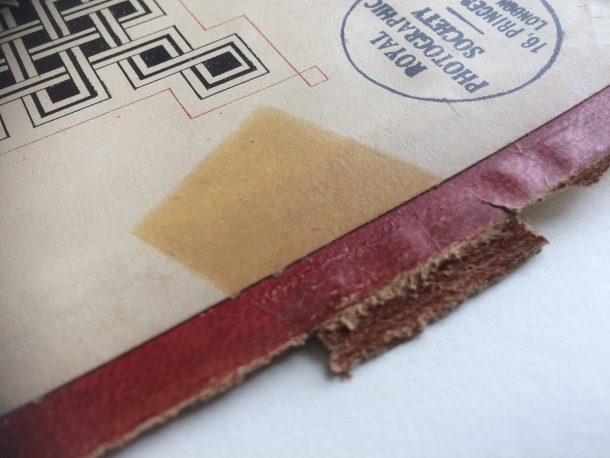
Paper conservators have been battling to remove tape from historic photographs and paper materials since the beginning of the profession. People loved using tape. It was a quick, convenient and effective repair method for tears, re-binding and reattaching objects to supports or mounts, among other uses.
Anyone working with collections knows the value and importance of keeping all parts of an object and its information together. This is what gives the object a history and its own unique story. From that perspective one can understand the frequent use of these tapes. For The Pencil of Nature, it was clear that the tape was used to ensure the covers were not separated from each other, or from the text block (the inner book).
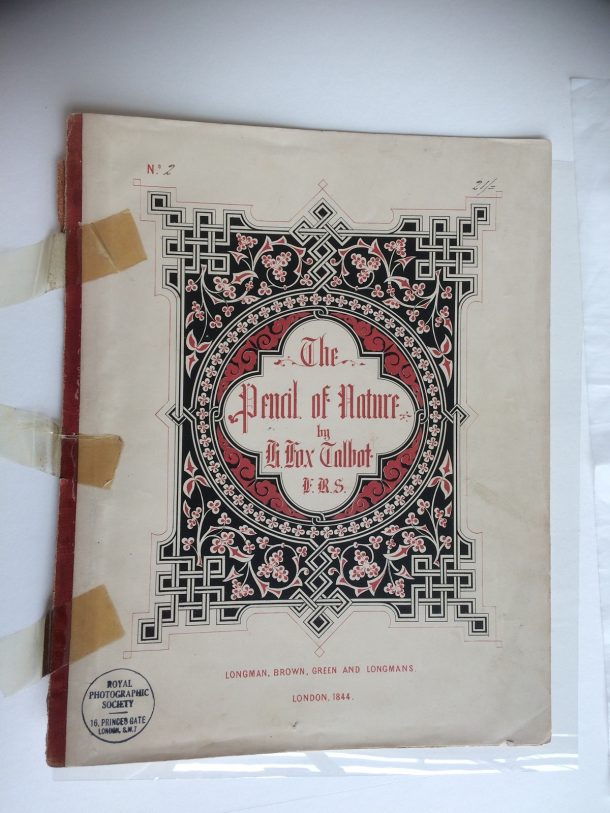
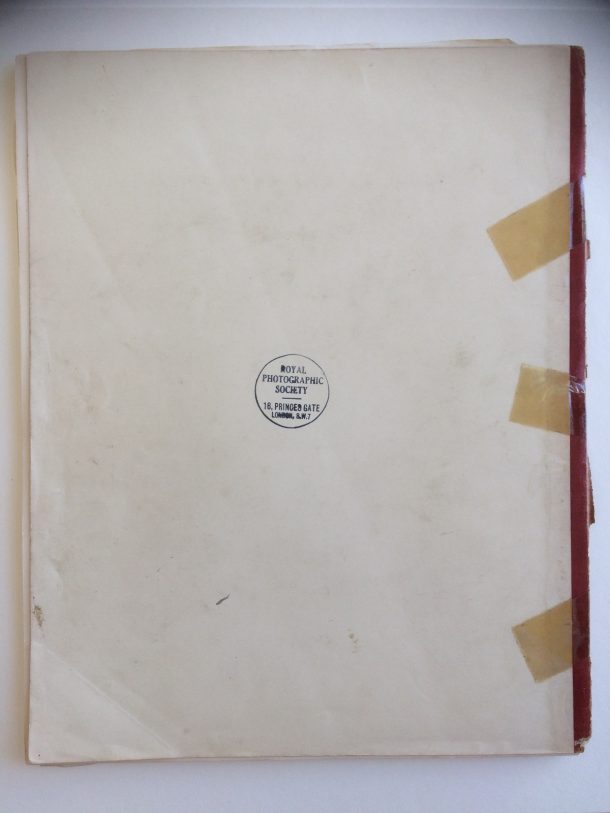
Unfortunately, the drawback of using these tapes is that over time they degrade, causing their chemical components to break down and in some cases, seep into porous surfaces (paper fibres as well as some photographic emulsions). As conservators we try to find ways of repairing objects that can be easily reversed if needed, while ensuring the safety and integrity through minimal intervention or change to the original object. Often, we are undoing previous attempts at repairs and redoing them in an ethical and safer way to increase the longevity of the objects life.
While options are available for removing tapes and the staining they cause, including the use of solvents, they can be invasive and introduce some risk to the object by potentially affecting the paper itself. Also-it isn’t guaranteed to work. Ideally, a less invasive method would be preferred. Enter the NANO technology of cleaning gels!
For the non-conservator, a basic breakdown of what these are: NANOgels are a recent development by chemists and scientists working alongside the conservation industry to create more efficient and safe nano technology cleaning products. The gels are one of these new products which are designed to hold in water or specific cleaning solvents, and can be cut to different sizes and placed directly onto a stain or soiled area.
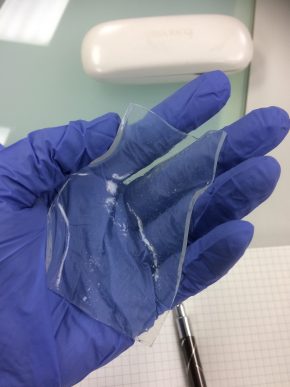
The brilliant thing about these gels is that they’re engineered so the vehicle (water or solvent) is always retained within the matrix of the gel and therefor never gets the surface of an object wet. Dirt is pulled into the gel when it is applied to a stain and traps the unwanted residue.
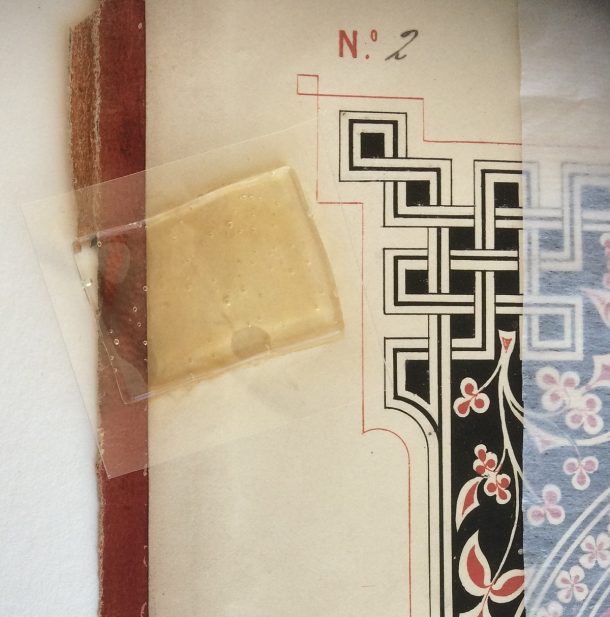
Being introduced to the NANORestore Gels from a conservation workshop I attended in Barcelona in May taught by Antonio Mirabile, who explained their use in tape removal on paper objects, it was clear that these solid pieces of jelly-like substances could be of great use to treat the Talbot book.
So, with this in my arsenal, I started the treatment.
The three backing pieces of the tape were removed first with a small spatula. Fortunately they were already quite ‘loose’ and had detached from the sticky portion of the tape with age, so this step went quickly.
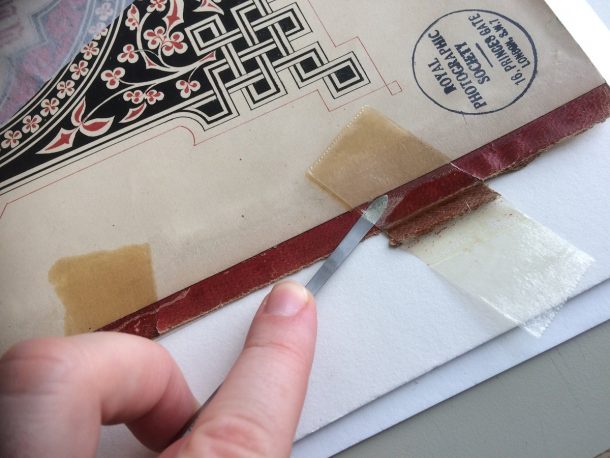
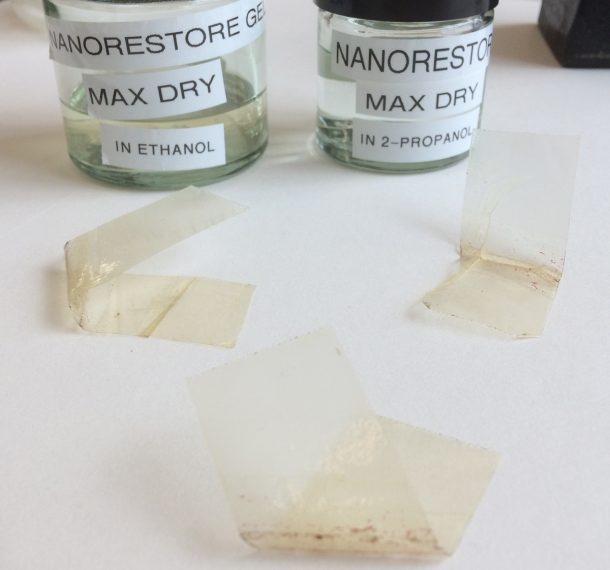
Then, small pieces of gel were applied to each stained area for twenty minutes. After removal, it was obvious that the staining was effectively drawn out into the gel making a visible difference to the paper. This was repeated until as much of the stain was removed as possible.
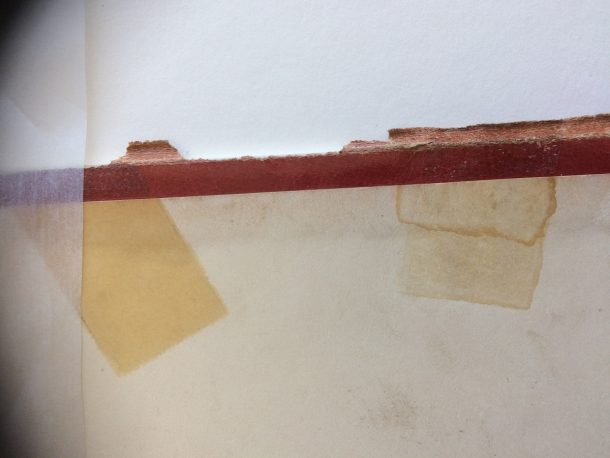
The results were a success, and both front and back covers of Talbot’s book were sticky tape free:
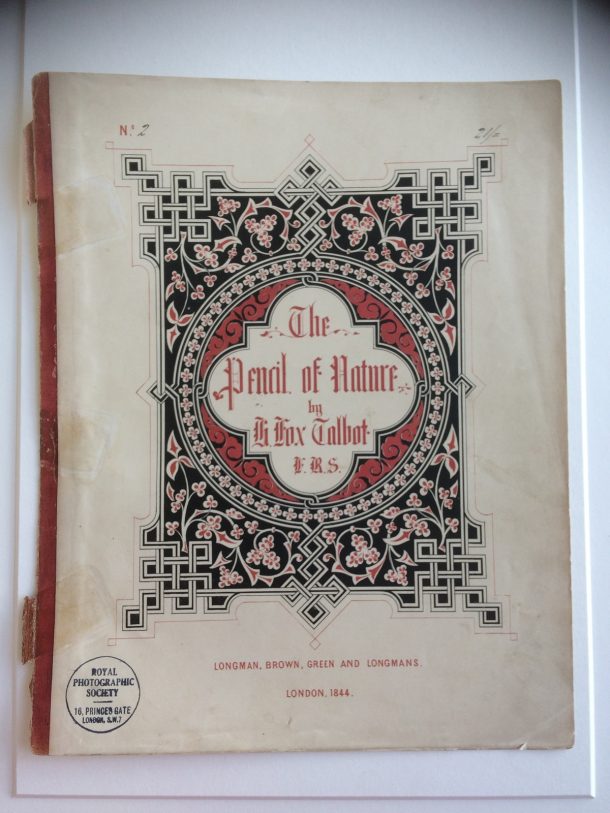
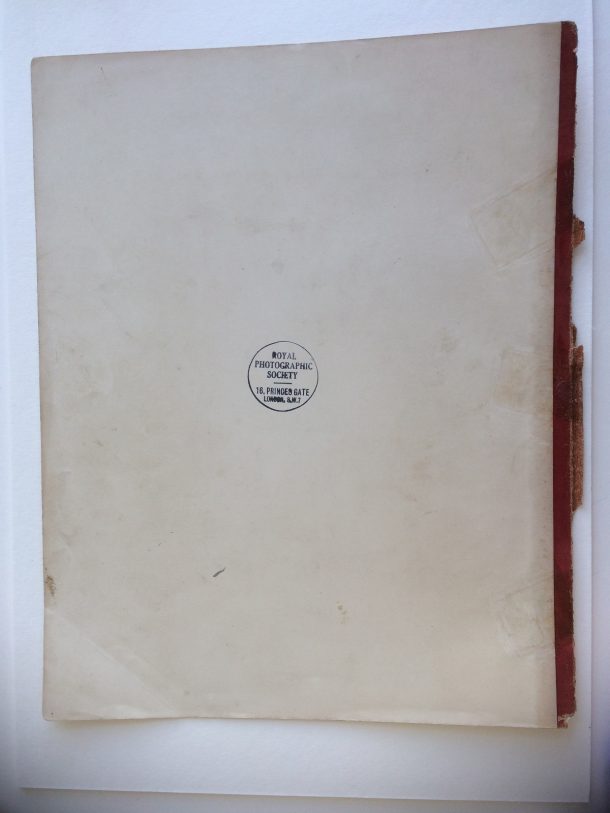
The next step was to pass on the two covers and text block leaves to book conservation who would then carry out the next stage of treatment, which was to re-join the covers and leaves back into a whole, intact volume (sorry, no pictures yet-but look out for our next post on this part of the process of Talbot’s famous book!)
The Photography Centre is supported by The Bern Schwartz Family Foundation, Modern Media, Shao Zhong Art Foundation and many other generous donors.


